Clearwing Tussock Moth, Carriola Ecnomoda, Lymantriinae









Clearwing tussock moth, Carriola ecnomoda, Lymantriinae
Found in Southeast Asia
Photo 1 by leptonia, 2 by rejoicegassah, 3 by dhfischer, 4 by antoniogiudici, 5 by mark027, 6-8 by ivijayanand, and 9 for scale by soooonchye
More Posts from Goblin-in-the-rain and Others
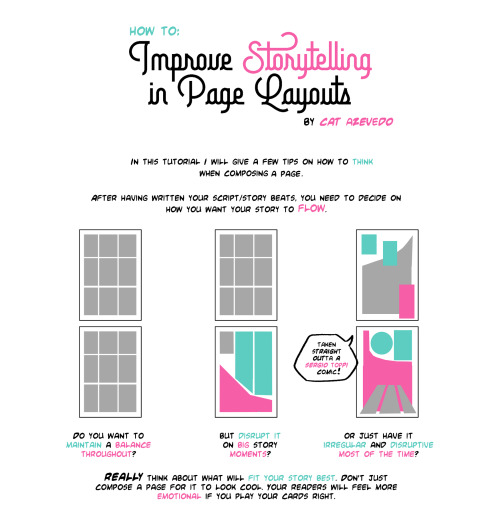
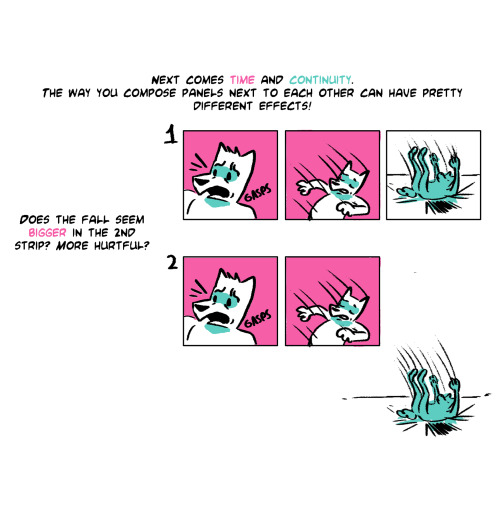
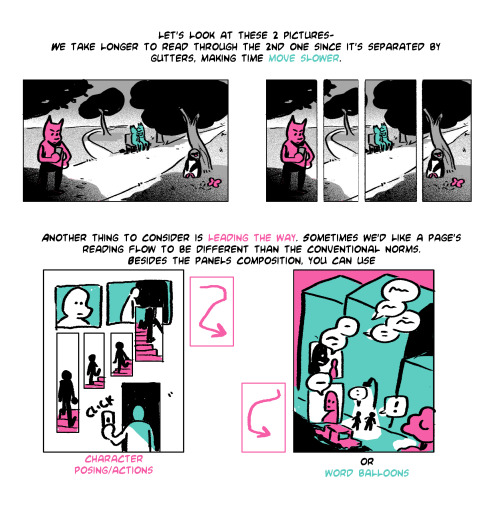

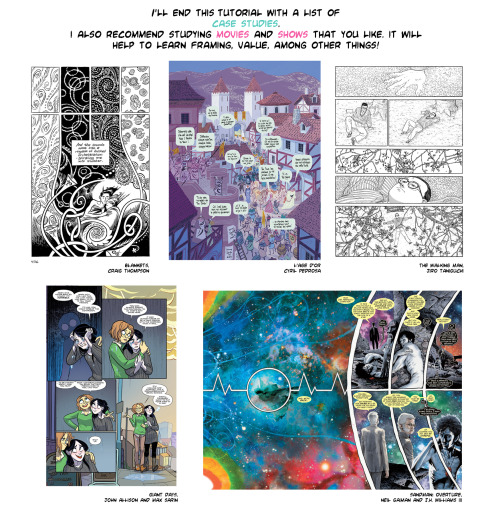
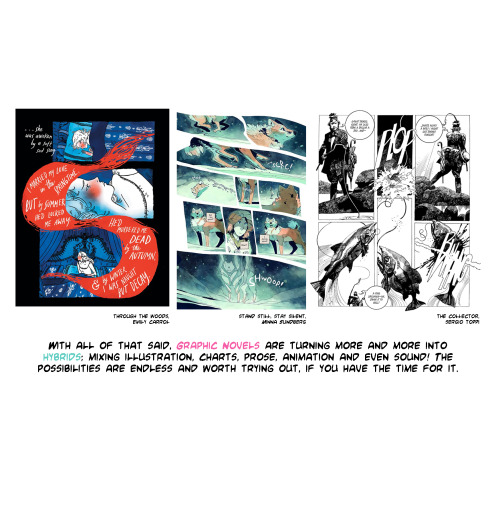
Did a small #tutorial for class on “How to Improve Storytelling in Panel Layouts”! Thought it might help some peepz around here!
Top Tips for Clues, Red Herrings, and Breadcrumbs
One of the most important parts of writing MYSTERY is figuring out what to do with clues and red herrings - and how to use them effectively. Here’s some advice that’s never steered me wrong:
Hide the real clue before the false ones! Most people, so by extent your readers and your sleuth, tend to focus on the last piece of information presented to them. A good strategy is to mention/show your real clue and then quickly shift focus.
Do a clue cluster! Squeeze your real clue in among a whole pile of red herrings or other clues, effectively hiding it in plain sight. This works especially well with multiple suspect mysteries.
Struggling to think of what a clue could be? Try this list:
Physical objects: Letters, notes, tickets, emails, keepsakes, text messages, diaries, etc.
Dialogue: voicemail recordings, overheard conversations, hearsay, gossip, rumours. All of these can hold grains of truth!
Red herrings distract and confound your protagonist and your reader, so you should be careful not to overuse them. Well balanced, red herrings should lead your characters down false paths to create confusion, tension, and suspense.
Contradictions! Have characters claim they did so-and-so at such-and-such a time, but other characters have evidence that contradicts this.
Balance! Avoid a clue that’s so obvious it’s like a neon sign saying “Look at me, I’m a clue!” but don’t make it so obscure it’ll be missed entirely. A good clue should leave a reader saying “Damn, I should have noticed that”
Image ID: a close-up picture of a spider. It’s looking up at the person taking the photo with its head tilted. It’s mostly mottled brown with two iridescent green patches on the front of its head. It has 4 round eyes, with the center pair being larger than the outer two. You can kind of see a silhouette of a person in the reflection of its eyes. It has little tufts of hair all of its body, with two larger tufts on either side of its head. Frankly, it’s adorable. /End ID

Bold Jumping Spider (Phidippus audax)
March 27, 2023
Southeastern Pennsylvania

Range: Costa Rica, Panama, & Colombia.
Closet cosplay of Arthur Lester!!



Development 🐉






㋡🥀



I've found this nifty reference website for artists called www.dimensions.com that has a database of exact measurements for various objects, plants, and animals
They have a premium version with 3D models that I haven't tried yet, but it's definitely very informative if you're trying to get the anatomy and proportions for different species of animals right!
Here you go anon!


And here’s one for animals if you want that too:

Do you have any resources for pose references?
God no, sorry. At most I trace the skeleton of a meme if I'm redrawing it or watch an anime with veguely similar concepts, but my posing is freehand and attrocious for it, and I'm terrible at collecting references. You can probably find someone on deviantart I think I remember seeing references there back in the day.
-
 momomonmo liked this · 3 months ago
momomonmo liked this · 3 months ago -
 defnotsaffron liked this · 3 months ago
defnotsaffron liked this · 3 months ago -
 prettypr0blems liked this · 4 months ago
prettypr0blems liked this · 4 months ago -
 tea-reader reblogged this · 5 months ago
tea-reader reblogged this · 5 months ago -
 midnightskraptor reblogged this · 5 months ago
midnightskraptor reblogged this · 5 months ago -
 river-starling liked this · 5 months ago
river-starling liked this · 5 months ago -
 abysseden reblogged this · 6 months ago
abysseden reblogged this · 6 months ago -
 boldaudax liked this · 6 months ago
boldaudax liked this · 6 months ago -
 ilikehfjone liked this · 6 months ago
ilikehfjone liked this · 6 months ago -
 alukiba liked this · 6 months ago
alukiba liked this · 6 months ago -
 definitelynotabanana liked this · 6 months ago
definitelynotabanana liked this · 6 months ago -
 midnightskraptor liked this · 6 months ago
midnightskraptor liked this · 6 months ago -
 danceswithwolverines liked this · 6 months ago
danceswithwolverines liked this · 6 months ago -
 ratcandy reblogged this · 6 months ago
ratcandy reblogged this · 6 months ago -
 ratcandy liked this · 6 months ago
ratcandy liked this · 6 months ago -
 daughter-of-skylark reblogged this · 6 months ago
daughter-of-skylark reblogged this · 6 months ago -
 dreams-in-daylight reblogged this · 6 months ago
dreams-in-daylight reblogged this · 6 months ago -
 daughter-of-skylark liked this · 7 months ago
daughter-of-skylark liked this · 7 months ago -
 golden-bubblebee reblogged this · 7 months ago
golden-bubblebee reblogged this · 7 months ago -
 daughter-of-skylark reblogged this · 7 months ago
daughter-of-skylark reblogged this · 7 months ago -
 viroqu reblogged this · 7 months ago
viroqu reblogged this · 7 months ago -
 namira reblogged this · 7 months ago
namira reblogged this · 7 months ago -
 dumbass4321 reblogged this · 7 months ago
dumbass4321 reblogged this · 7 months ago -
 spaceofmischief reblogged this · 7 months ago
spaceofmischief reblogged this · 7 months ago -
 r4d104ct1vef0l146e reblogged this · 7 months ago
r4d104ct1vef0l146e reblogged this · 7 months ago -
 r4d104ct1vef0l146e liked this · 7 months ago
r4d104ct1vef0l146e liked this · 7 months ago -
 catgirl-dot-exe liked this · 7 months ago
catgirl-dot-exe liked this · 7 months ago -
 shrimp-bird reblogged this · 7 months ago
shrimp-bird reblogged this · 7 months ago -
 wick-24 reblogged this · 7 months ago
wick-24 reblogged this · 7 months ago -
 yavosaur liked this · 7 months ago
yavosaur liked this · 7 months ago -
 meowmeowfication reblogged this · 7 months ago
meowmeowfication reblogged this · 7 months ago -
 meowmeowfication liked this · 7 months ago
meowmeowfication liked this · 7 months ago -
 in-mutual-weirdness reblogged this · 7 months ago
in-mutual-weirdness reblogged this · 7 months ago -
 in-mutual-weirdness liked this · 7 months ago
in-mutual-weirdness liked this · 7 months ago -
 transfaggot reblogged this · 7 months ago
transfaggot reblogged this · 7 months ago -
 bearback reblogged this · 7 months ago
bearback reblogged this · 7 months ago -
 trailer-trash-trans-boy reblogged this · 7 months ago
trailer-trash-trans-boy reblogged this · 7 months ago -
 trailer-trash-trans-boy liked this · 7 months ago
trailer-trash-trans-boy liked this · 7 months ago -
 my-t4t-romance liked this · 7 months ago
my-t4t-romance liked this · 7 months ago -
 eraserheadbaby2 reblogged this · 7 months ago
eraserheadbaby2 reblogged this · 7 months ago -
 fuckblast liked this · 7 months ago
fuckblast liked this · 7 months ago -
 fuckblast reblogged this · 7 months ago
fuckblast reblogged this · 7 months ago -
 meowtalhead liked this · 7 months ago
meowtalhead liked this · 7 months ago -
 meowtalhead reblogged this · 7 months ago
meowtalhead reblogged this · 7 months ago -
 thoughtfulrobot reblogged this · 7 months ago
thoughtfulrobot reblogged this · 7 months ago -
 thoughtfulrobot liked this · 7 months ago
thoughtfulrobot liked this · 7 months ago

Hi it’s me puddleorganism if you’re confused why you got a billion hoops from me
298 posts